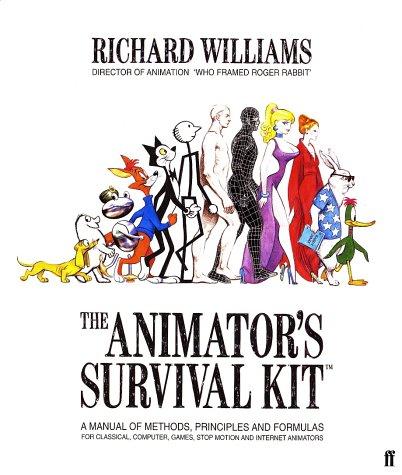
凯兹《数学简史》
书刊介绍
内容简介
本书作者是世界上最著名的数学史家和教育家之一,他通过本书向读者展示了从古代到近代再到现代数学发展的历史,其中包括数学在东方和西方世界的发展历程。本书第一版因为其通俗易懂、引人入胜,曾获得美国科学史学会颁发的1995年度Watson Davis奖。本书适合作为高等院校数学专业相关课程的教材,同时也适合对数学史感兴趣的读者阅读。本书的主要特点●灵活的组织:本书主要按年代顺序来介绍各地域各时间段数学的发展,而且一直叙述到20世纪。●天文学:因为天文学的发展与数学有着密切的联系,所以书中包含了丰富的天文学方面的内容。●全球视野:书中不仅介绍了欧洲数学,而且还包括中国、印度和伊斯兰世界的数学发展。●典型的习题及部分习题答案:每章都包含很多习题,而且书中还给出了部分习题的答案,通过这些习题读者可以更充分地理解各章的内容。●附加的教学法:附录中给出了在数学教学中如何使用本书内容的细节。
作品目录
preface
chapter one egypt and mesopotamia
1.1 egypt
1.1.1 introduction
1.1.2 number systems and computations
1.1.3 linear equations and proportional reasoning
1.1.4 geometry
1.2 mesopotamia
1.2.1 introduction
1.2.2 methods of computation
1.2.3 geometry
1.2.4 square roots and the pythagorean theorem
1.2.5 solving equations
1.3 conclusion
exercises
references
chapter two greek mathematics to the time of euclid
2.1 the earliest greek mathematics
2.1.1 thales, pythagoras, and the pythagoreans
2.1.2 geometric problem solving and the need for proof
.2.2 euclid and his elements
2.2.1 the pythagorean theorem and its proof
2.2.2 geometric algebra
2.2.3 the pentagon construction
2.2.4 ratio, proportion, and incommensurability
2.2.5 number theory
2.2.6 incommensurability, solid geometry, and the method
of exhaustion
exercises
references
chapter three greek mathematics from archimedes to ptolemy
3.1 archimedes
3.1.1 the determination ofrr
3.1.2 archimedes' method of discovery
3.1.3 sums of series
3.1.4 analysis
3.2 apollonius and the conic sections
3.2.1 conic sections before apollonius
3.2.2 definitions and basic properties of the conics
3.2.3 asymptotes, tangents, and foci
3.2.4 problem solving using conics
3.3 ptolemy and greek astronomy
3.3.1 astronomy before ptolemy
3.3.2 apollonius and hipparchus
3.3.3 ptolemy and his chord table
3.3.4 solving plane triangles
3.3.5 solving spherical triangles
exercises
references
chapter four greek mathematics from diophantus to hypatia
4.1 diophantus and the arithrnetica
4.1.1 linear and quadratic equations
4.1.2 higher-degree equations
4.1.3 the method of false position
4.2 pappus and analysis
4.3 hypatia
exercises
references
chapter five ancient and medieval china
5.1 calculating with numbers
5.2 geometry
5.2.1 the pythagorean theorem and surveying
5.2.2 areas and volumes
5.3 solving equations
5.3.1 systems of linear equations
5.3.2 polynomial equations
5.4 the chinese remainder theorem
5.5 transmission to and from china
exercises
references
chapter six ancient and medieval india
6.1 indian number systems and calculations
6.2 geometry
6.3 algebra
6.4 combinatorics
6.5 trigonometry
6.6 transmission to and from india
exercises
references
chapter seven mathematics in the islamic world
7.1 arithmetic
7.2 algebra
7.2.1 the algebra of al-khwarizmi
7.2.2 the algebra of aba kamil
7.2.3 the algebra of polynomials
7.2.4 induction, sums of powers, and the pascal triangle
7.2.5 the solution of cubic equations
7.3 combinatorics
7.3.1 counting combinations
7.3.2 deriving the combinatorial formulas
7.4 geometry
7.4.1 the parallel postulate
7.4.2 volumes and the method of exhaustion
7.5 trigonometry
7.5.1 the trigonometric functions
7.5.2 spherical trigonometry
7.5.3 values of trigonometric functions
7.6 transmission of islamic mathematics
exercises
references
chapter eight mathematics in medieval europe
8.1 geometry
8.1.1 abraham bar .hiyya's treatise on mensuration
8.1.2 leonardo of pisa's practica geometriae
8.2 combinatorics
8.2.1 the work of abraham ibn ezra
8.2.2 leviben gerson and induction
8.3 medieval algebra
8.3.1 leonardo of pisa's liber abbaci
8.3.2 the work of jordanus de nemore
8.4 the mathematics of kinematics
exercises
references
chapter nine mathematics in the renaissance
9.1 algebra
9.1.1 the abacists
9.1.2 algebra in northern europe
9.1.3 the solution of the cubic equation
9.1.4 bombelli and complex numbers
9.1.5 viete, algebraic symbolism, and analysis
9.2 geometry and trigonometry
9.2.1 art and perspective
9.2.2 the conic sections
9.2.3 regiomontanus and trigonometry
9.3 numerical calculations
9.3.1 simon stevin and decimal fractions
9.3.2 logarithms
9.4 astronomy and physigs
9.4.1 copernicus and the heliocentric universe
9.4.2 johannes kepler and elliptical orbits
9.4.3 galileo and kinematics
exercises
references
chapter ten pre. calculus in the seventeenth century
10.1 algebraic symbolism and the theory of equations
10.1.1 william oughtred and thomas harriot
10.1.2 albert girard and the fundamental theorem of algebra
10.2 analytic geometry
10.2.1 fermat and the introduction to plane and solid loci
10.2.2 descartes and the geometry
10.2.3 the work of jan de witt
10.3 elementary probability
10.3.1 blaise pascal and the beginnings of the theory of probability
10.3.2 christian huygens and the earliest probability text
10.4 number theory
exercises
references
chapter eleven calculus in the seventeenth century
11.1 tangents and extrema
11.1.1 fermat's method of finding extrema
11.1.2 descartes and the method of normals
11.1.3 hudde's algorithm
11.2 areas and volumes
11.2.1 infinitesimals and indivisibles
11.2.2 torricelli and the infinitely long solid
11.2.3 fermat and the area under parabolas and hyperbolas
11.2.4 wallis and fractional exponents
11.2.5 the area under the sine curve and the rectangular hyperbola
11.3 rectification of curves and the fundamental theorem
11.3.1 van heuraet and the rectification of curves
11.3.2 gregory and the fundamental theorem
11.3.3 barrow and the fundamental theorem
11.4 isaac newton
11.4.1 power series
11.4.2 algorithms for calculating fluxions and fluents
11.4.3 the synthetic method of fluxions and newton's physics
11.5 gottfried wilhelm leibniz
11.5.1 sums and differences
11.5.2 the differential triangle and the transmutation theorem
11.5.3 the calculus of differentials
11.5.4 the fundamental theorem and differential equations
exercises
references
chapter twelve analysis in the eighteenth century
12.1 differential equations
12.1.1 the brachistochrone problem
12.1.2 translating newton's synthetic method of fluxions into
the method of differentials
12.1.3 differential equations and the trigonometric functions
12.2 the calculus of several variables
12.2.1 the differential calculus of functions of two variables
12.2.2 multiple integration
12.2.3 partial differential equations: the wave equation
12.3 the textbook organization of the calculus
12.3.1 textbooks in fluxions
12.3.2 textbooks in the differential calculus
12.3.3 euler' s textbooks
12.4 the foundations of the calculus
12.4.1 george berkeley's criticisms and maclaurin's response
12.4.2 euler and d'alembert
12.4.3 lagrange and power series
exercises
references
chapter
thirteen probability and statistics in the eighteenth century
13.1 probability
13.1.1 jakob bernoulli and the ars conjectandi
13.1.2 de moivre and the doctrine of chances
13.2 applications of probability to statistics
13.2.1 errors in observations
13.2.2 de moivre and annuities
13.2.3 bayes and statistical inference
13.2.4 the calculations of laplace
exercises
references
chapter
fourteen algebra and number theory in the eighteenth century
14.1 systems of linear equations
14.2 polynomial equations
14.3 number theory
14.3.1 fermat's last theorem
14.3.2 residues
exercises
references
chapter fifteen geometry in the eighteenth century
15.1 the parallel postulate
15.1.1 saccheri and the parallel postulate
15.1.2 lambert and the parallel postulate
15.2 differential geometry of curves and surfaces
15.2.1 euler and space curves and surfaces
15.2.2 the work of monge
15.3 euler and the beginnings of topology
exercises
references
chapter sixteen algebra and number theory in the nineteenth century
16.1 number theory
16.1.1 gauss and congruences
16.1.2 fermat's last theorem and unique factorization
16.2 solving algebraic equations
16.2.1 cyclotomic equations
16.2.2 the theory of permutations
16.2.3 the unsolvability of the quintic
16.2.4 the work of galois
16.2.5 jordan and the theory of groups of substitutions
16.3 groups and fields -- the beginning of structure
16.3.1 gauss and quadratic forms
16.3.2 kronecker and the structure of abelian groups
16.3.3 groups of transformations
16.3.4 axiomatizafion of the group concept
16.3.5 the concept of a field
16.4 matrices and systems of linear equations
16.4.1 basic ideas of matrices
16.4.2 eigenvalues and eigenvectors
16.4.3 solutions of systems of equations
16.4.4 systems of linear inequalities
exercises
references
chapter
seventeen analysis in the nineteenth century
17.1 rigor in analysis
17.1.1 limits
17.1.2 continuity
17.1.3 convergence
17.1.4 derivatives
17.1.5 integrals
17.1.6 fourier series and the notion of a function
17.1.7 the riemann integral
17.1.8 uniform convergence
17.2 the arithmetization of analysis
17.2.1 dedekind cuts
17.2.2 cantor and fundamental sequences
17.2.3 the theory of sets
17.2.4 dedekind and axioms for the natural numbers
17.3 complex analysis
17.3.1 geometrical representation of complex numbers
17.3.2 complex functions
17.3.3 the riemann zeta function
17.4 vector analysis
17.4.1 surface integrals and the divergence theorem
17.4.2 stokes's theorem
exercises
references
chapter
eighteen statistics in the nineteenth century
18.1 the method of least squares
18.1.1 the work of legendre
18.1.2 gauss and the derivation of the method of least squares
18.2 statistics and the social sciences
18.3 statistical graphs
exercises
references
chapter
nineteen geometry in the nineteenth century
19.1 non-euclidean geometry
19.1.1 taurinus and log-spherical geometry
19.1.2 the non-euclidean geometry of lobachevsky and bolyai
19.1.3 models of non-euclidean geometry
19.2 geometry in n dimensions
19.2.1 grassmann and the ausdehnungslehre
19.2.2 vector spaces
19.3 graph theory and the four-color problem
exercises
references
chapter twenty aspects of the twentieth century
20.1 the growth of abstraction
20.1.1 the axiomatization of vector spaces
20.1.2 the theory of rings
20.1.3 the axiomatization of set theory
20.2 major questions answered
20.2.1 the proof of fermat's last theorem
20.2.2 the classification of the finite simple groups
20.2.3 the proof of the four-color theorem
20.3 growth of new fields of mathematics
20.3.1 the statistical revolution
20.3.2 linear programming
20.4 computers and mathematics
20.4.1 the prehistory of computers
20.4.2 turing and computability
20.4.3 von neumann's computer
exercises
references
appendix using this textbook in teaching mathematics
courses and topics
sample lesson ideas for incorporating history
time line
answers to selected problems
general references in the history of mathematics
index
相关推荐
-

柳公权楷书水写布精练本
柳公权楷书水写布精练本 本书特色 施志伟编*的《柳公权楷书水写布精练本》是根据浙江省书法教材所收柳公权楷书而编制的针对性的练习本,涵盖教材中选中的全部例字,又根...
-

爱伦·坡小说全集:第一卷
爱伦·坡小说全集:第一卷 本书特色 在这个世界上,有一个伟大的作家,对爱与恨有着自己独特的理解方式,他的这种理解方式直接影响了20世纪整个心理学界、哲学...
-

美国中小学最佳课外读本(套装共3册)
美国中小学最佳课外读本(套装共3册) 本书特色 ★ 16开平装,黑龙江教育出版社出版★ 《醒来的大自然》为美国著名散文家约翰·巴勒斯的**部自然散文集,首版于1...
-

TOEFL高分作文
TOEFL高分作文 内容简介 首先,要明白只列大纲是没有意义的。很多考生所谓的准备方法不过是列列大纲,背背模板,然后冲时考场才发现自己的无力和无助。列出来的大纲...
-

英汉互译教程
英汉互译教程 本书特色 本书是全国高等教育自学考试英语专业(本科)必考英语翻译课程的指定教材,按照该课程1999年自学考试大纲编写。英汉翻译包括英译汉和汉译英,...
-

论语精选-诸子名言-读经典.写汉字-10
论语精选-诸子名言-读经典.写汉字-10 本书特色 本书在邀请书法家用签字笔写出范本,供同学们临摹的同时,还精选了儒家经典之一《论语》中的诸多经彩段落,让学生们...
-

小学阅读教学的生活体验研究
小学阅读教学的生活体验研究 内容简介 本书内容包括:小学阅读教学的基本理论、语文教师对文本的解读、教师的阅读课堂教学行为分析等。小学阅读教学的生活体验研究 目录...
-

客户管理案例-(附考试大纲)
客户管理案例-(附考试大纲) 本书特色 《高等教育自学考试客户管理专业指定教材:客户管理案例(附考试大纲)》由中国客户管理专业水平证书考试教材编写委员会主编,专...
-

史蒂夫·比达尔夫《养育男孩》
《养育男孩(最新版)》内容简介:千万不要觉得你家的小宝贝还只是个孩子,就是这个男孩,他终有一天成为一位兼具责任感和成熟魅力
-

克里斯汀-冰岛大学校长
克里斯汀-冰岛大学校长 本书特色 克里斯汀·英格尔芙斯多蒂尔为位传奇女性,冰岛百年名校冰岛大学的首任女性校长。在她的治下,冰岛大学快速发展,成为世界排名三百多位...
-

2013硕士学位研究生入学资格考试GCT英语模拟试题与解析
2013硕士学位研究生入学资格考试GCT英语模拟试题与解析 本书特色 《2013硕士学位研究生入学资格考试:gct英语模拟试题与解析》与考试大纲同步,由权威机构...
-

金融英语口语
金融英语口语 内容简介 为了行之有效应对外开放的国情及与国外金融业接轨的新形势,金融行业对职业的外语水平也有了更高的要求。实施公务制度之后,英语培训与考核更是必...
-

布尔函数的设计与分析
布尔函数的设计与分析 本书特色 布尔函数是对称密码算法的重要部件。为集中展 现布尔函数密码学性质、构造方法和应用方面的近期 成果,《布尔函数的设计与分析/网络与...
-

在人间-无障碍精读版
在人间-无障碍精读版 本书特色 《在人间》是高尔基著名的自传三部曲之一,主要记述了阿廖沙1871年到1884年的生活,这段时期他为了生活,与外祖母一起摘、卖野果...
-

儒林外史
儒林外史 本书特色 《儒林外史》是一部描绘知识分子群像的长篇讽刺小说。作品描写了深受八股毒害的儒生的种种荒诞与虚伪行为,以写实主义手法描绘各类人士面对&ldqu...
-

多功能练字字帖 启蒙英语 (赠神奇魔术笔)
多功能练字字帖启蒙英语(赠神奇魔术笔) 本书特色 字帖中配有英文单词,每一个单词配有精美图片。本书的*特色就是对英文单词和图片的挑选。英文单词,经过专业少儿英语...
-

肖秀荣2020考研政治1000题(上册:试题,下册:解析)
肖秀荣2020考研政治1000题(上册:试题,下册:解析) 内容简介 本书严格按照新考研思想政治理论大纲要求编写,以大纲规定的“考查的知识范围”和“基本题型”为...
-

中外名人传记:居里夫人传
中外名人传记:居里夫人传 本书特色 一部好的文学作品,也许是作品中的人物形象,也许是一句经典的言论,都会使我们为之动容,刻骨铭心,终生受益,甚至会影响和激励我们...
-

朱自清散文精选(语文必读丛书)
朱自清散文精选(语文必读丛书) 内容简介 朱自清由一个正直的知识分子,成为一个进步的教授;由一个旧社会的狷者,成为一个民主的斗士。他走过了自己的曲折道路,毛泽东...
-

僧舞-英文
僧舞-英文 本书特色 在英文阅读中了解中国少数民族的历史与风情,感受中国代表性少数民族女性作家丰盈委婉的笔触。僧舞-英文 内容简介 《僧舞》是一部古典题材短篇小...





